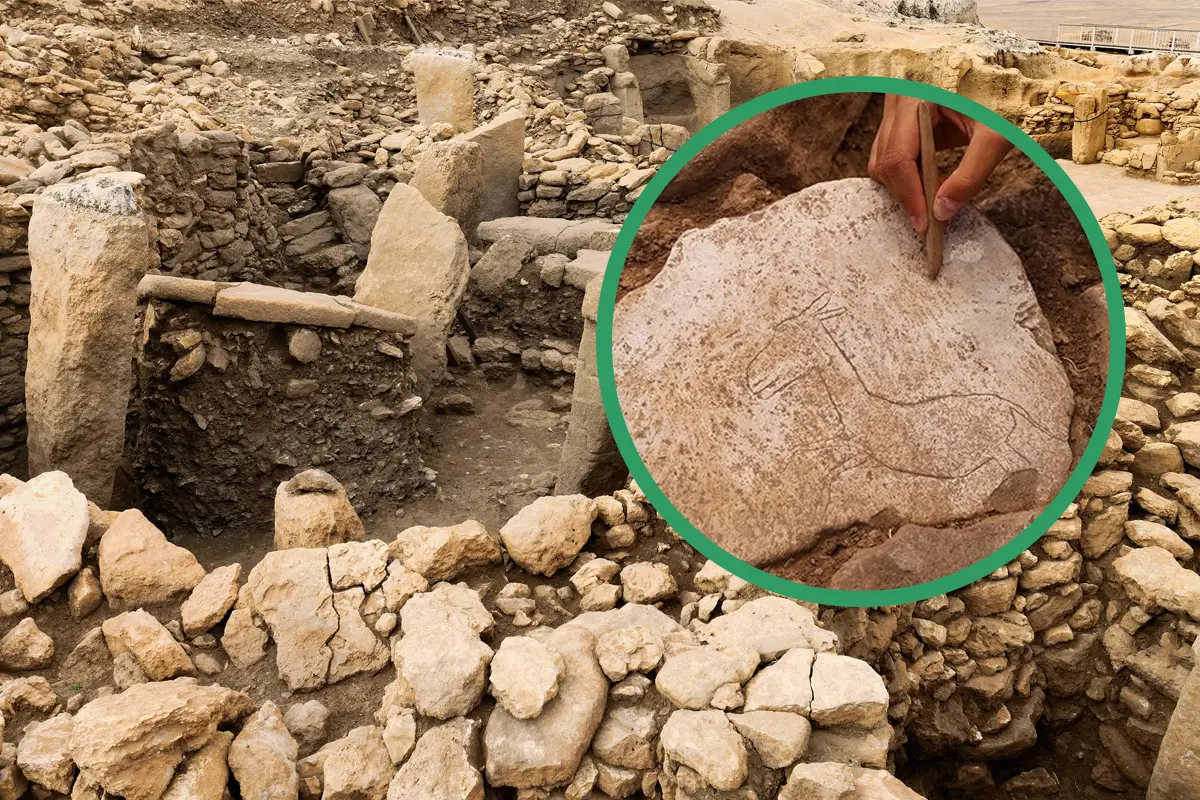Karahan Tepe is a prehistoric complex, first discovered in 1997 near Yağmurlu in Şanlıurfa Province, Türkiye.
Karahan Tepe is thought to be connected with Göbekli Tepe, as both sites feature similar T-shaped stelae and architectural elements.
Previous excavations have uncovered 266 stelae, various depictions of animals and human-like figures, and a rock-cut chamber housing 11 large phalluses.
Archaeologists suggest that the site dates from between 9,000 to 11,000 BC (predating the construction of Göbekli Tepe), and is possibly the oldest known settlement from the Pre-Pottery Neolithic.
In a recent press statement by Mehmet Ersoy, Minister of Culture and Tourism of The Republic of Türkiye, archaeologists have discovered a depiction of a wild donkey on the floor of an ancient dwelling at Karahan Tepe.
The period of domestication and distribution of the donkey (Equus asinus) in Turkey occurred around 5000 to 7000 years ago. They are thought to have their origins from the Nubian (Equus africanus africanus) and Somalian (E. a. somaliensis) ass, both of which are subspecies of the African wild ass.
The African wild ass lived in the deserts and other arid areas of the Horn of Africa, in Eritrea, Ethiopia and Somalia. However, it formerly had a wider range that extended into Egypt.
Minister Ersoy said: “Karahantepe sheds light on the depths of history as one of the most important settlements of the Neolithic Age, and that the Taş Tepeler project continues to shed light on world history.”
“The work found before the World Neolithic Congress to be held for the first time in Şanlıurfa reflects the artistic understanding of its period as one of the rare examples. I would like to thank our teams from the Excavations and Research Department who brought this unique work to light,” added Ersoy.
Header Image Credit : Mehmet Ersoy
Sources : Ministry of Culture and Tourism of The Republic of Türkiye





